Subsection 6.2.1 Geometrical Optics
Geometric optics is based on the principle of rectilinear propagation of light in which light is considered as a ray which travels in a straight line. Anything which emits light is known as object. Objects that emit light on their own are called a luminous (or self-luminous) objects such as sun, stars, light bulb, fireflies, etc. Objects that do not emit but reflect light are known as non-luminous objects such as moon, planets, wood, plastics, metals, etc.
Light travels in straight lines until it encounters with some obstacle. Hence we can approximate light by considering it as a ray. The physics which deals with light in the form of a ray is called geometrical optics. Light bents from its straight path when it strikes on the surface of another medium such as in reflection and refraction. When light strikes on the surface of material three phenomena happen. That is,
- light reflects from the material
- light transmitts throgh the material, and
- light is absorbed by the the material.
Subsubsection 6.2.1.1 Reflection of Light
When light travels in one medium strikes onto the surface of another medium it bounces off to the same medium is known as reflection . It is the reflection which helps us to see our image in the mirror. There are two types of reflection, specular (regular) reflection and diffuse (irregular) reflection. Both types of reflection obey the laws of reflection.
Reflection of Light2
simpop.org/reflection/reflection.htmLaws of Reflection:
- The first law of reflection states that the incident ray, the reflected ray, and the normal to the point of incident all lie in the same plane.
- The second law of reflection states that the angle of reflection is equal to the angle of incidence.
Consider a light ray, AO is incident on a smooth surface, like morror at an angle \(\theta_i\) and bounces off, then from \(2^{nd}\) law of reflection
\begin{equation}
\theta_i = \theta_r\tag{6.2.1}
\end{equation}
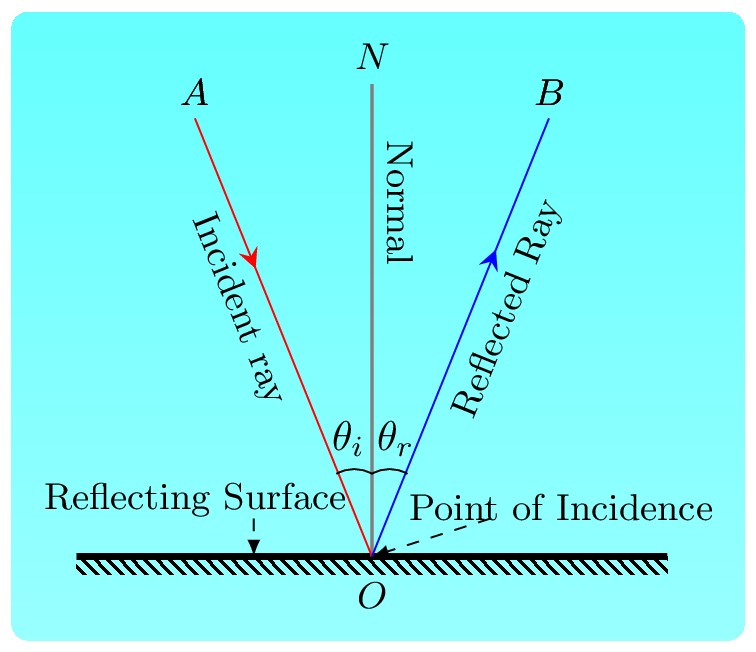
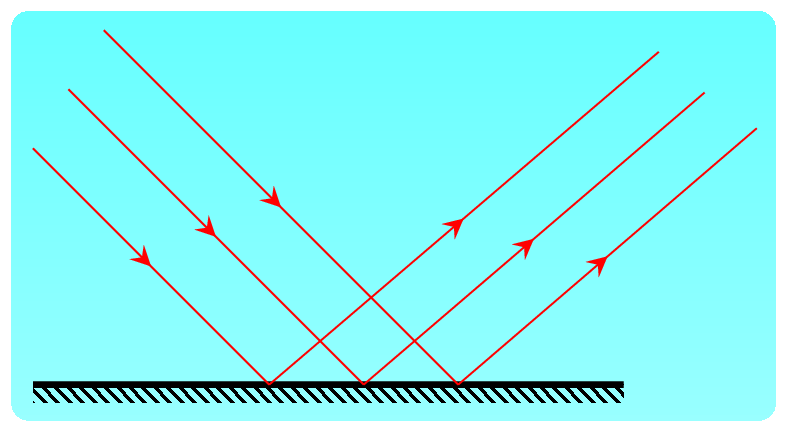
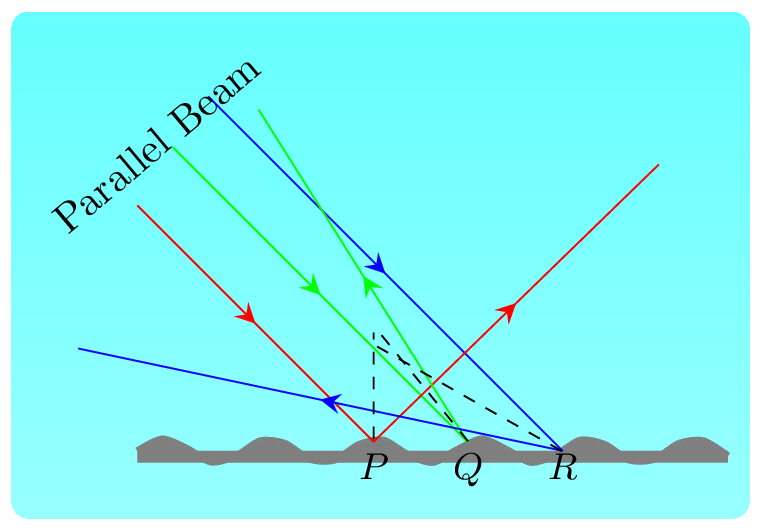
Subsubsection 6.2.1.2 Refraction of Light
The phenomenon of bending of light ray as it goes from one medium to another is called a refraction . The velocity of light depends on the medium it is propagating which causes the refraction. The measure of an obstacle that a medium impose on the velocity of light is known as refractive index of that medium.
Refraction of Light3
simpop.org/refraction/refraction.htm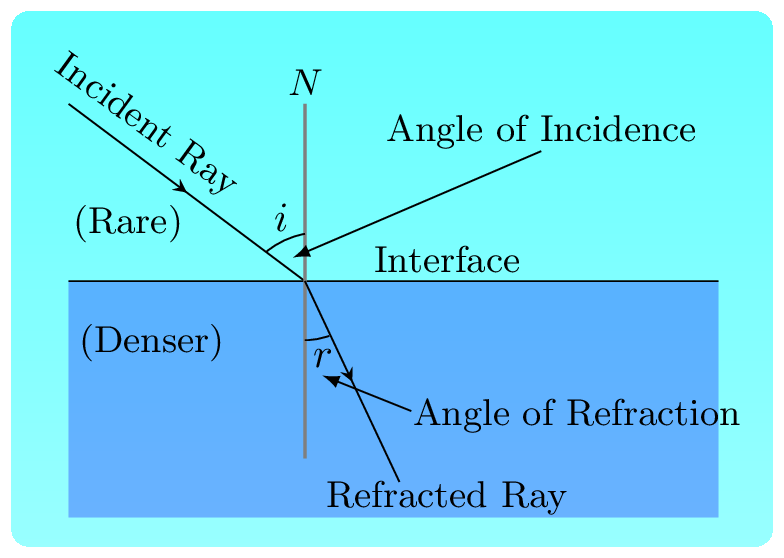

Bent PencilSubsubsection 6.2.1.3 Dispersion of Light
The phenomenon of splitting of white light into its constituent colors is known as dispersion . When white light passes through a prism it splitted into seven colors due to dispersion of light. The images of this color patterns formed on a screen is called a spectrum. The spectrum consists of a visible and invisible regions of light. The principal colors of light in the visible spectrum are given as "VIBGYOR" (Violet, Indigo, Blue, Green, Yellow, Orange, and Red). The deviation occurred in violet light is maximum and that for red light is minimum as shown in figure Figure 6.2.4. In the invisible regions, the spectrum of wavelengths shorter than violet is called an ultraviolet light and that for longer than red is called an infrared light. The color of light is dependent on its wavelength, \(\lambda\text{.}\) Here is a list of wavelengths of visible light
\begin{align*}
\lambda_{red}\amp = 620\,nm-780 \,nm\\
\lambda_{orange}\amp = 585\,nm-620 \,nm\\
\lambda_{yellow}\amp = 570\,nm-585 \,nm\\
\lambda_{green}\amp = 490\,nm-570 \,nm\\
\lambda_{blue}\amp = 440\,nm-490 \,nm\\
\lambda_{indigo}\amp = 420\,nm-440 \,nm\\
\lambda_{violet}\amp = 400\,nm-420 \,nm
\end{align*}
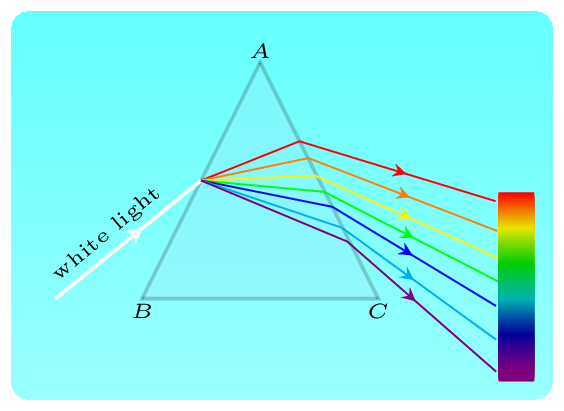
Rainbow is formed when sunlight is dispersed by rain droplets which are suspended in air. When sunlight enters the raindrop it refracts then it undergoes dispersion and total internal reflection from the rear end of the droplet surface and again refracted out in the atmosphere and that’s how we see a rainbow. So all the given process i.e total internal reflection, refraction, and dispersion take place in the rainbow formation as shown in figure Figure 6.2.5. Scattering of light doesn’t take place in the process of formation of a rainbow.
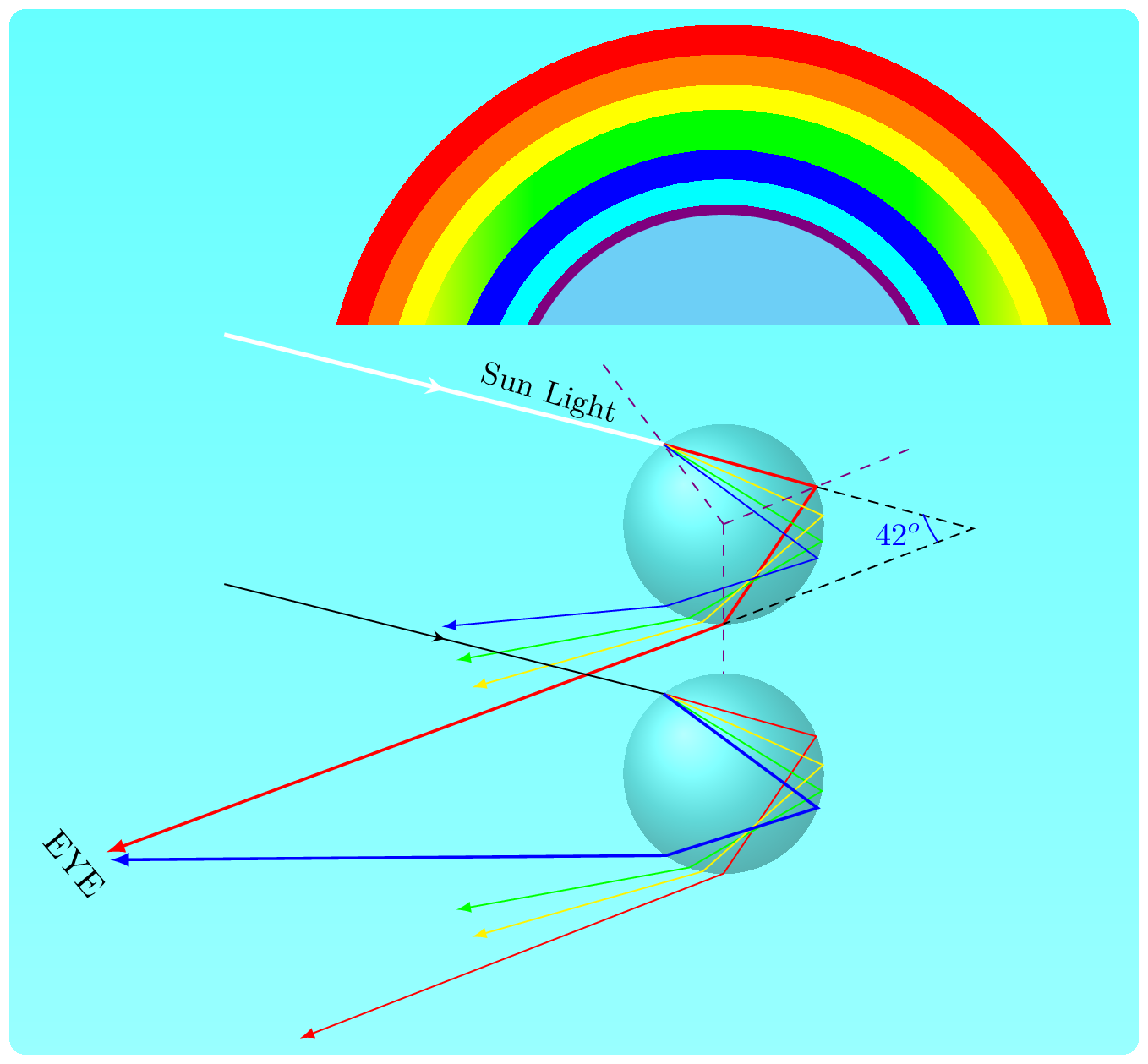
Subsubsection 6.2.1.4 Scattering of Light
It is a phenomenon of redirected light in different directions when it interacts with small particles or irregular surfaces. This can cause the light to appear hazy or dispersed. Due to scattering sky looks bluish as blue colors scattered more in sky than any other colors from the visible spectrum of light. In fact, violet light scattered more than blue but our eyes are more sensitive o blue color than violet light hence blue colors are much more prevailed than others in sky. At sunset and sunrise, the sunlight has to travel longer distance in the atmosphere which causes most of the blue and other shorter wavelengths to scatter in the sky and only red color can reach to our eyes hence the sun appears reddish in color.
